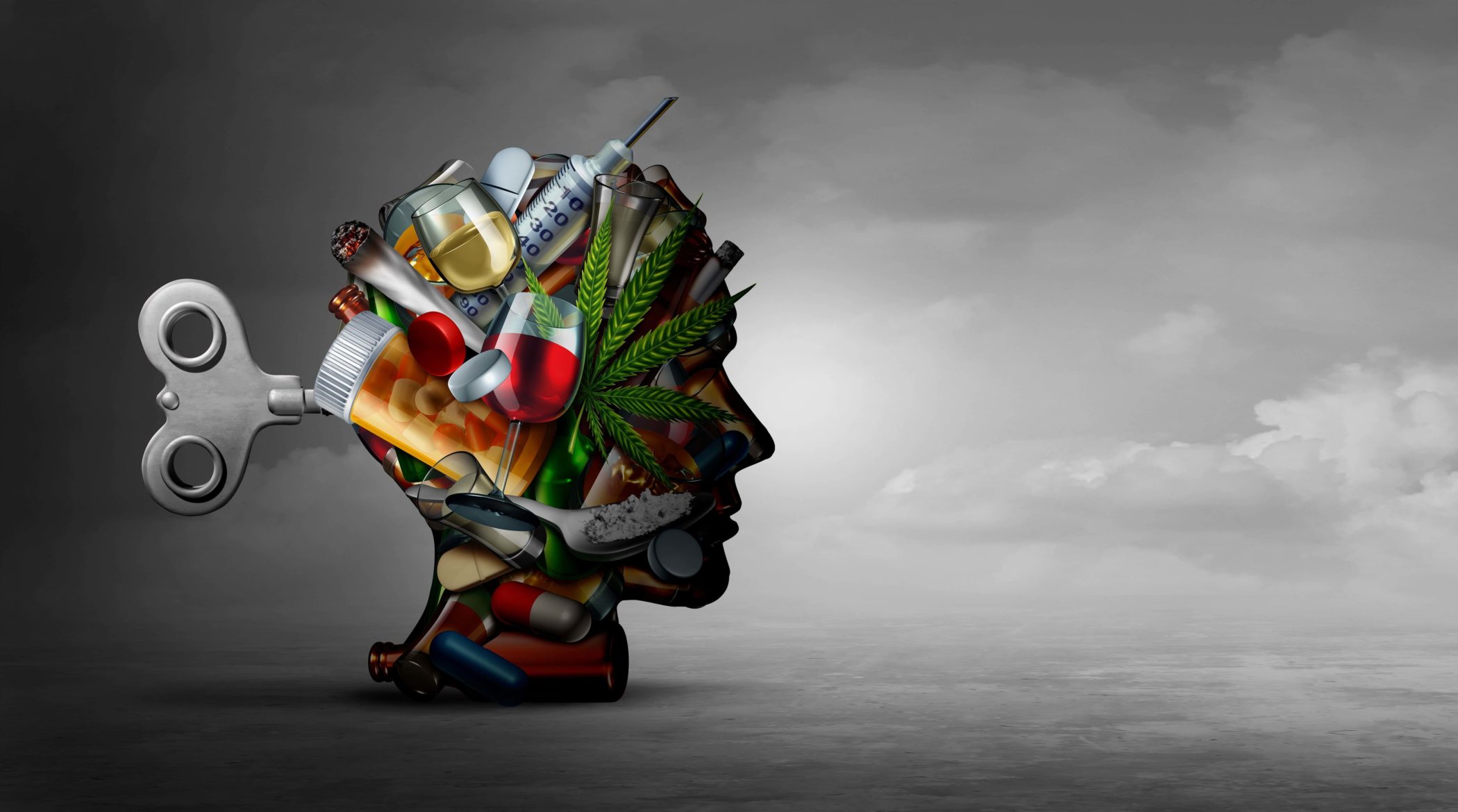Addiction can happen with many different types of drugs, from illegal drugs like cocaine or heroin to prescription medications like opioid painkillers. Addiction begins when drugs start to change how our brains work. As this process progresses, we’re no longer able to control how much we take of the drug or how often. Eventually, we can risk our health, personal relationships, financial status, and more to continue our drug use — a clear sign of addiction.
The Brain on Drugs
The brain’s pleasure center, the nucleus accumbens, is a cluster of nerve cells underneath the cerebral cortex. This spot is where the neurotransmitter dopamine is released. Whenever someone engages in a pleasurable experience, such as eating a good meal, having sex, or taking drugs, the brain releases dopamine. Drugs of abuse like nicotine or heroin release very powerful dopamine surges, making them highly addictive.
The addictiveness of a particular drug can often be linked to how quickly the drug causes the brain to release dopamine, as well as the intensity and reliability of that release. Additionally, the way a drug is consumed impacts how quickly the dopamine surge happens. For example, a swallowed pill doesn’t produce as fast a release as a drug that is injected or smoked.
As highly addictive drugs flood the brain’s pleasure center, another part of the brain, the hippocampus, creates memories of this experience and the rapid feeling of satisfaction that it causes. This leads to the amygdala establishing a conditioned response to any stimuli associated with the drug, beginning the process of addiction.
While researchers once believed that the dopamine release from drugs was the cause of addiction, they have since learned that the way dopamine interacts with glutamate, another neurotransmitter, also plays a role in how addiction develops. Together, the two neurotransmitters can hijack the part of the brain responsible for reward-related learning. Addictive behaviors and substances affect this reward center, first by stimulating it and then by overloading it.
With repeated exposure to addictive drugs, nerve cells begin to communicate between the nucleus accumbens and the prefrontal cortex, linking a person’s enjoyment of drugs with a drive to seek the drugs out. From there, drugs can quickly short circuit how the brain anticipates rewards. This is how tolerance happens.
From Tolerance to Abuse
There is a difference between physical dependence and tolerance and abuse. When it comes to physical dependence, the person using the drugs will notice they experience withdrawal symptoms if they suddenly stop using the substance. An individual has reached tolerance when the quantity of drugs they had been taking becomes less effective, and they require higher doses to achieve the original feeling the drug gave them. Addiction occurs when someone takes drugs compulsively, without the ability to stop, no matter the potential consequences.
Everyone is different, and not everyone who uses illegal substances will become addicted. A person’s risk of addiction increases if they have a family history of substance abuse or addiction. The National Institute on Drug Abuse (NIDA) has found that a person’s biology (also called epigenetics) can account for between 40% and 60% of a person’s risk of addiction.
Someone who started using drugs at an early age or who has a co-occurring mental health challenge also has an elevated risk of becoming addicted. Even having difficult family relationships is considered a risk factor for addiction.
Finally, traumatic experiences — from losing a loved one to being assaulted — can lead to addiction as the person tries to block out painful memories and self-medicate.
How Do You Know If Someone is Addicted to Drugs?
Warning signs that an individual is addicted include:
- An urge to use the drug every day or many times a day
- Taking more drugs than they want to and for longer than they thought they would
- Always having the drug with them and buying it even if they can’t afford it
- Using drugs even if they cause trouble at work or with family and friends
- Spending more time alone
- Not taking care of their health or appearance
- Stealing, lying, or doing dangerous activities, like driving while high or having unsafe sex
- Spending most of their time getting, using, or recovering from the effects of the drug
- Feeling sick when they try to quit
Just like other chronic diseases such as diabetes or heart disease, addiction is both preventable and treatable. Whether or not someone will have a problem with addiction depends on a complex interaction between their genes, their neurobiology, and a host of other factors, from the psychological to the social. Addiction is an illness. It is not a lack of willpower or a consequence of bad behavior. It can happen to anyone, from any background, at any age. Recovery, however, is possible. The first step is to admit there is a problem and ask for help. While addiction can’t be cured, it can be managed successfully, just like other chronic diseases.
At Bridges of Hope, our treatment philosophy is based on a comprehensive and integrated approach to addressing all issues related to substance use and mental health disorders. We use therapeutically proven, evidence-based clinical practices to provide superior client care throughout Indiana.


 Verify Insurance
Verify Insurance
 Toll Free Call
Toll Free Call